EU & China
Opposite Worlds or Same Difference?
European and Chinese cities face the same challenges: this study explores how they are dealing with them – and proposes shared solutions.
Opposite Worlds or Same Difference?
European and Chinese cities face the same challenges: this study explores how they are dealing with them – and proposes shared solutions.
what are
the challenges?
the challenges?
UNEQUAL INCOME,
UNEQUAL HOUSING
UNEQUAL HOUSING
EUROPEAN UNION
Is there a good average income across the EU? It might have increased, but the divide is wide in places. And as house prices creep up, it’s pushing lower earners towards accommodation that can be fraught with issues.
Read more
There are wide disparities in income levels across the EU, and the gaps have got even bigger since the global financial crisis of 2007. The top twenty per cent of earners take home 5.2 times as much as the bottom twenty per cent. As a result, social polarisation is increasing – not just between rich and poor, but between cultural and ethnic groups as well. Also on the rise is urban segregation, which sees different social groups unevenly distributed in urban spaces. In 2017, 112 million EU inhabitants were at risk of poverty or social exclusion, corresponding to 22% of the total population. Of this 112 million, 47 million people were living in cities. COVID19 has exacerbated economic inequalities: the rate of people in, or at risk of, poverty in Europe is expected to increase by 4.8%. Although average living standards have tended to increase over recent years, city house prices are growing faster than income in the majority of EU member states. People on low incomes or from marginalised groups often struggle to find decent, affordable housing. Areas in which accommodation does cost less frequently present multiple issues: inferior buildings standards and education facilities, unemployment, and reduced access to public services. This downward spiral leads to even greater segregation and exclusion.
Read less
CHINA
Who can afford decent housing in China? Everyone’s income has improved, but the rich are speeding ahead of the pack, and it’s creating trouble for low to middle earners struggling to find a place to live.
Read more
China’s economy is racing ahead – it is one of the fastest growing in the world. Over the last thirty years, more than 800 million people have pulled themselves out of extreme poverty in China. But paradoxically, wealth inequality has also grown substantially. While incomes have risen across society as a whole, those for high earners and in urban areas have escalated faster than for those at the lower end of the wealth spectrum. Housing affordability has emerged as a major issue as a result of this trend, which looks set to continue. Driven by the increasing wealth divide and real estate speculation, housing prices have soared in major Chinese cities in the last twenty years, making housing practically unaffordable for low to middle earners. Many people in this bracket turn to illegal private rentals on the urban fringe, which often provide only limited access to clean water and proper sanitation. These urban villages fall outside the realm of urban master plans, meaning local authorities have little incentive to extend infrastructure and public services to them.
Read less
THE RISE OF LONELINESS
EUROPEAN UNION
Does an ageing population equate to a rise in loneliness? Children flying the nest could be a contributing factor, but that’s not the only reason that people in the EU are feeling increasingly alone.
Read more
Urban loneliness is growing in the EU. This is most apparent for vulnerable groups, such as the unemployed and the elderly, and it is being driven by multiple forces. Many people live alone – researchers call the current share of single-person households “wholly unprecedented historically. There have been changes to the size and structure of families, with single parent families and childless couple households on the rise. On top of this, the population of the EU is ageing. Older people – defined here as those aged 65 years or more – are projected to increase in the next three decades, from 19.7 % of the total population in 2018 to 28.5 % in 2050. Capital cities tend to have the highest proportions of single-person households – 50% in Paris, and 60% in Stockholm, for example. So, is urbanisation to blame? Researchers argue that it can weaken family and community bonds. This may help to explain why there is generally a greater prevalence of mental health problems in higher-income, and therefore more urbanised, areas. Loneliness is emerging as a key concern for the EU, and the COVID19 pandemic is exacerbating the issue. A recent study of the Dutch population reveals that concerns about personal losses and the pandemic, as well as a decline in trust in societal institutions, were associated with increased mental health problems and loneliness.
Read less
CHINA
Is a sense of community in Chinese towns a thing of the past? When income level is the only common denominator between residents, feelings of loneliness can quickly start to rise.
Read more
A study of older adults in China showed that in 1992, approximately 16% felt lonely. Within eight years, this number had hit 30% - almost double. In the last five decades, China has seen drastic declines in fertility, changed social attitudes, and uneven rates of economic mobility, all of which have contributed to rapid increases in one-person and one-couple households. Currently, the “empty-nest elderly family” in China accounts for almost 25% of the households headed by older adults, and this number is expected to increase to 90% by 2030. In addition to this increase in solo living, rapid urbanisation is driving loneliness, as its dispersive nature often weakens social connections in urban spaces. Most urban communities in China are made up of people with similar incomes, but this is often the only common denominator. The roots of neighbourhood relations have weakened, making community building difficult.
Read less
MIGRATION AND
THE FEAR OF STRANGERS
THE FEAR OF STRANGERS
EUROPEAN UNION
Does an increase in migration mean an increase in challenges? Where cities promise work, jobseekers will follow, but with new cultural mixtures comes new potential for “the fear of the unknown”.
Read more
Of the 57 million people in the EU residing in a country different to that of their birth, roughly 20 million have come from another EU Member State and approximately 37 million from outside the EU. Of these, 1.8 million are recognised refugees. These migrant groups are unevenly distributed, and social integration levels vary. However, in contrast with general perceptions, mobility within the EU itself has increased at a much greater speed than that of non-EU migration to the EU. A large percentage of migrants move to cities, drawn in by their job opportunities and living standards. Today, nearly one in five migrants live in the world’s twenty largest cities. What challenges are emerging from this increased movement of people? Publicly financed goods and services face additional demands and there is an increased need for specialiased approaches for vulnerable people, including a large number of unaccompanied minors. Public authorities are simultaneously required to set preparedness mechanisms against radicalisation or xenophobic protests. In terms of employment and social inclusion rates, non-EU citizens are facing tougher odds than host country citizens in most EU Member States
Read less
CHINA
Are people at the centre of urbanisation plans in China? When the country’s cities are fortresses of general wellbeing and services, rural citizens struggling to obtain entry would disagree.
Read more
China’s Hukou system divides its population into two groups: urban citizens and rural citizens. But in 2013, rural migrant workers accounted for 44% of total employment in urban areas. Urban citizens live in cities, and are granted access to essential services, including education, employment, health care, pensions, and subsidised housing. Rural citizens live in smaller towns or villages, and whilst they are entitled to arable land, they cannot use urban services. Many rural migrant workers are struggling to obtain urban residency, and this division has led to poor integration of rural migrants, social exclusion and conflicts. However, some provinces, such as Guangdong, have introduced measures that enable migrants to move into its cities. Tianjin, Shenzhen, Wuhan, Chengdu and Chongqing are also deploying incentives to attract young graduates and talent.
Read less
THE URBAN SPRAWL
EUROPEAN UNION
What’s the answer to increased urban demand? As metropolitan populations grow, cities extend and sprawl to accommodate them. Land take in the EU28 amounted to 539km2 a year between 2012 and 2018, with urban sprawl one of its many drivers. But pressure for more sustainable living is increasing.
Read more
The median density of European cities sits at around 3,000 residents per square kilometre – almost twice that of their North American counterparts, but half that of Asian cities. The amount of urban space consumed per person has more than doubled over the past 50 years. This rapid increase has brought about some serious socio-economic and environmental consequences, including surface sealing, ecosystem fragmentation, land erosion, arable land loss, increased traffic and emissions.Urban sprawl is a major threat to sustainable development. With public transport services costly and harder to provide in suburban areas, dependence on and usage of private transport has increased as a result. Despite the EU’s efforts to tackle this issue, there is no common policy between nations. However, the EU is moving briskly forwards with urban renewal, which focuses on regenerating deprived urban areas, with a strong emphasis on citizen participation. Some governments, including the UK, Germany and France, have begun to reduce financial incentives that reward sprawl, and instead embarked upon redensification strategies to generate increased demand for local services and greater economic activity.
Read less
CHINA
What happens when cities are free to expand without restriction? When inner city areas are neglected at the expense of new developments, the consequences go further than bites being taken from arable land. Urban sprawl is just one of the factors that led to a 5.92 million hectare, or 3.31%, decrease in arable land in China between 2000 and 2010.
Read more
The cities of China have grown steadily over recent years. Driven by government incentives, local authorities have boosted their revenues by auctioning off state-owned land outside cities and retaining most of the income. The flip side of this is the loss of high-quality arable land; the supply of properties outweighing demand, leading to largely uninhabited ghost towns; and existing urban districts being neglected, resulting in a degree of social disintegration and economic distress. What is being done to slow this rapid urban expansion? Reforms to the public finance system should help reduce dependency on land auctioning as a revenue base for local authorities. Changes are being made to local governments, and new regulations that restrict multiple property ownership for individuals are being introduced. Recent urban renewal regulations and activities show rising awareness on the potential of existing urban areas in developing vibrant, mixed, and liveable urban communities
Read less
EMISSIONS AND THE HOVERING
CLOUD OF CLIMATE CHANGE
CLOUD OF CLIMATE CHANGE
EUROPEAN UNION
Are EU cities well-placed to reduce their emissions? The challenge doesn’t present itself on equal footing from one city to the next, but there is one common denominator – they need to take action.
Read more
Cities might only occupy 2% of the planet’s landmass, but they account for over 70% of its CO2 emissions. With such a large disproportion, it has become apparent that the climate emergency needs to be tackled in cities – by, and for, their citizens. What does this mean for the EU? Buildings, transport, food and utilities are its main sources of greenhouse gas emissions, but the numbers vary greatly from one city to the next. Factors including population size, economic performance, urban infrastructures, legal frameworks, and vulnerability to the effects of climate change – flooding, heatwaves, forest fires and extreme weather events – all play a role. While cities are producing more emissions than any other area, they are also they best placed to tackle the challenge. Infrastructure density is higher in cities, so there is greater potential for cross-sectoral integration and complex infrastructures such as smart grids. They can also access capital and know-how and can create the economies of scale that are necessary for the piloting and upscaling of new ideas and concepts.
Read less
CHINA
Should Chinese urbanisation continue unchecked, given it is a major driver of economic growth? Chinese cities are generating more than just financial gains – they also produce 85% of the country’s CO2 emissions.
Read more
Growing urban populations bring growing demand for energy – research has shown that urbanisation has caused energy consumption and CO2 emissions to increase in every Chinese province. A study estimates that CO2 emissions from energy use in cities will grow by 1.8% per year between 2006 and 2030. But before devising a solution, it is important to fully understand the challenge. Some Chinese cities have conducted energy and greenhouse gas emission inventories, but the country lacks data that factors in detailed sectoral drivers, fuel mixes, and end-uses specific to urban areas. Affluent cities are shown to have systematically lower emissions per unit of GDP. Why? They are supported by imports from less well-off, industrial cities, which are in turn supported by local coal or oil extraction centres. Policies directly targeting manufacturing would drastically undermine the GDP of industrial cities, but consumption-based policies might allow emission reductions to be subsidised by those with greater ability to pay. One thing is clear - the cities of China will need to play an increasing role in helping the country to meet its energy and emissions reduction targets.
Read less
A CURRENCY IN
NATURAL RESOURCES
NATURAL RESOURCES
EUROPEAN UNION
How does the EU dispose of its millions of tonnes of waste? Ensuring a good quality of life for its growing populations is a complex matter when fuel for the economy is detriment to its natural resources.
Read more
The EU’s cities are the engines firing its economy. But they depend heavily on non-urban areas to meet their demand for resources – such as energy, water and food; and to dispose of their waste and emissions. The challenge is efficiently managing resources to improve quality of life for a growing economy whilst reducing correlated impacts on the environment. Because those impacts have become apparent. Just one example is that up to 15% of citizens living in EU cities are exposed to PM10 that exceed EU limit value regulations. There are disparities in resource management from place to place within the EU. 67% of waste is recycled or composted in Slovenia, in Malta, it’s 8%. Encouragingly, the EU average is 46% – demonstrating a distinct trend in a move away from landfilling. The amount of municipal waste per capita per year also varies. In Romania, it’s 261kg opposed to 777kg in Denmark, and an EU average of 483kg. The quality of drinking water is generally very high in the EU – albeit water distribution is expensive. This is especially true in older cities, where water infrastructures are ageing and deteriorating, making leakage management a major challenge. In December 2015, the European Commission adopted a European Union Action Plan for a circular economy, followed by the adoption of a set of measures that support its implementation. This includes ways to integrate legislation on waste, consumer products, and chemicals.
Read less
CHINA
Are natural resources the currency that pays for urbanisation? The benefits of development have made themselves clear, but resulting issues surrounding air, water, and waste cannot be ignored.
Read more
Urbanisation is happening at increasing speed in China. One of the results? A significant improvement in urban infrastructure and public services. The coverage and share rate of urban public facilities have both increased greatly: municipal water coverage rose from 53.7% in 1981 to 98.1% in 2015, and the urban wastewater treatment rate jumped from 14.9% in 1991 to 91.9% in 2015 and green coverage rate of built district increased from 16.9% in 1986 to 40.1% in 2015. However, there is a flip side – urbanisation consumes high levels of energy and natural resources. Not only does this mean it is costly, it is also inefficient and has led to a serious deterioration in urban ecology. Air, water, and waste pollution have all become very serious issues in urban China. In February 2012, two-thirds of China’s cities failed to satisfy air quality standards, and in 2015, more than half of its cities experienced acid rain. The groundwater quality monitoring results of 4110 stations in 182 cities across the country showed that the monitoring points of poor and extremely poor quality accounted for 40.4% and 16.8%, respectively. China’s cities disposed of 215 million of solid waste in 2017 –with an at an average annual growth rate of 4.8%.
Read less
what are
the solutions?
the solutions?
How can we create inclusive and sustainable cities?

EU & China
Opposite Worlds or Same Difference?
Opposite Worlds or Same Difference?
European and Chinese cities face the same challenges:
this study explores how they are dealing with them – and proposes shared solutions.
this study explores how they are dealing with them – and proposes shared solutions.
UNEQUAL INCOME,
UNEQUAL HOUSING
UNEQUAL HOUSING
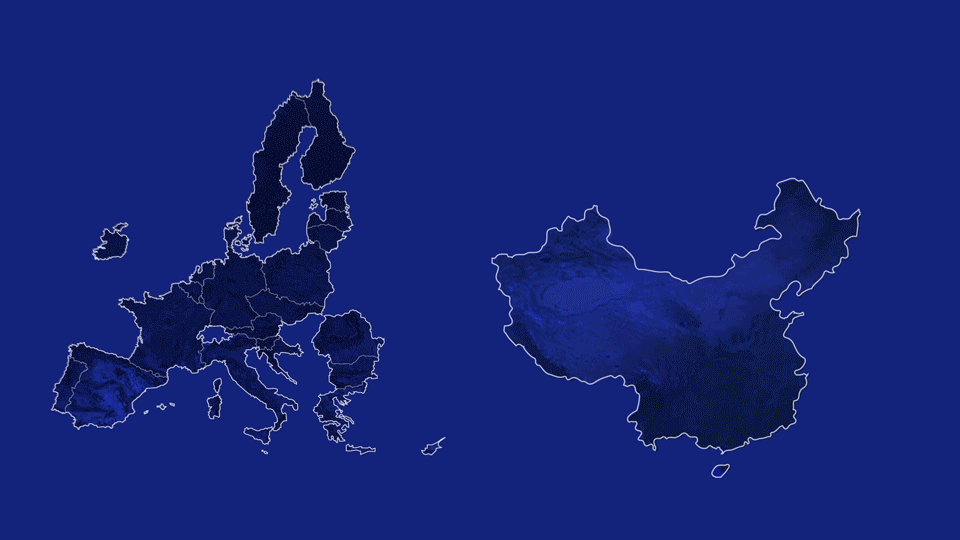
EUROPEAN UNION
Is there a good average income across the EU? It might have increased, but the divide is wide in places. And as house prices creep up, it’s pushing lower earners towards accommodation that can be fraught with issues.
Read more
There are wide disparities in income levels across the EU, and the gaps have got even bigger since the global financial crisis of 2007. The top twenty per cent of earners take home 5.2 times as much as the bottom twenty per cent. As a result, social polarisation is increasing – not just between rich and poor, but between cultural and ethnic groups as well. Also on the rise is urban segregation, which sees different social groups unevenly distributed in urban spaces. In 2017, 112 million EU inhabitants were at risk of poverty or social exclusion, corresponding to 22% of the total population. Of this 112 million, 47 million people were living in cities. COVID19 has exacerbated economic inequalities: the rate of people in, or at risk of, poverty in Europe is expected to increase by 4.8%. Although average living standards have tended to increase over recent years, city house prices are growing faster than income in the majority of EU member states. People on low incomes or from marginalised groups often struggle to find decent, affordable housing. Areas in which accommodation does cost less frequently present multiple issues: inferior buildings standards and education facilities, unemployment, and reduced access to public services. This downward spiral leads to even greater segregation and exclusion.
Read less
CHINA
Who can afford decent housing in China? Everyone’s income has improved, but the rich are speeding ahead of the pack, and it’s creating trouble for low to middle earners struggling to find a place to live.
Read more
China’s economy is racing ahead – it is one of the fastest growing in the world. Over the last thirty years, more than 800 million people have pulled themselves out of extreme poverty in China. But paradoxically, wealth inequality has also grown substantially. While incomes have risen across society as a whole, those for high earners and in urban areas have escalated faster than for those at the lower end of the wealth spectrum. Housing affordability has emerged as a major issue as a result of this trend, which looks set to continue. Driven by the increasing wealth divide and real estate speculation, housing prices have soared in major Chinese cities in the last twenty years, making housing practically unaffordable for low to middle earners. Many people in this bracket turn to illegal private rentals on the urban fringe, which often provide only limited access to clean water and proper sanitation. These urban villages fall outside the realm of urban master plans, meaning local authorities have little incentive to extend infrastructure and public services to them.
Read less
THE RISE OF LONELINESS
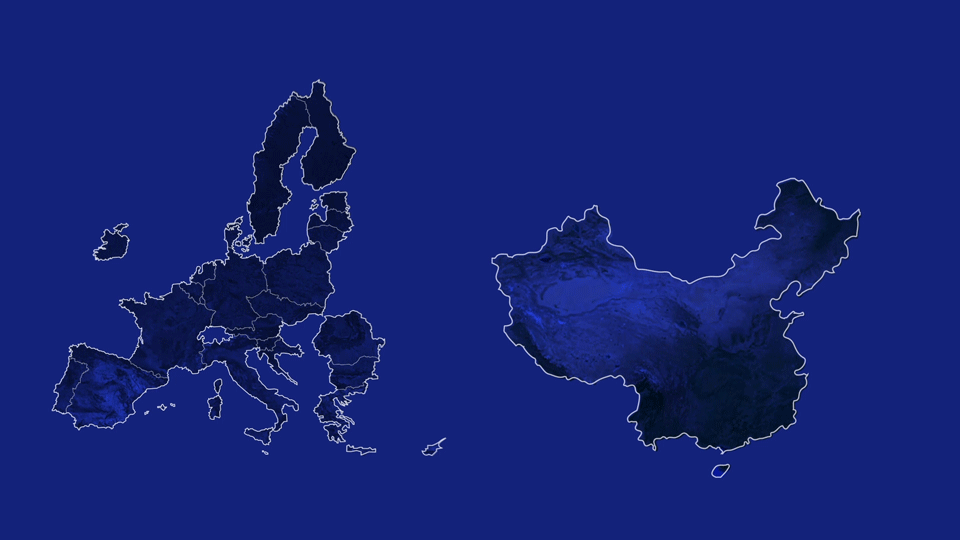
EUROPEAN UNION
Does an ageing population equate to a rise in loneliness? Children flying the nest could be a contributing factor, but that’s not the only reason that people in the EU are feeling increasingly alone.
Read more
Urban loneliness is growing in the EU. This is most apparent for vulnerable groups, such as the unemployed and the elderly, and it is being driven by multiple forces. Many people live alone – researchers call the current share of single-person households “wholly unprecedented historically”. There have been changes to the size and structure of families, with single parent families and childless couple households on the rise. On top of this, the population of the EU is ageing. Older people – defined here as those aged 65 years or more – are projected to increase in the next three decades, from 19.7 % of the total population in 2018 to 28.5 % in 2050. Capital cities tend to have the highest proportions of single-person households – 50% in Paris, and 60% in Stockholm, for example. So, is urbanisation to blame? Researchers argue that it can weaken family and community bonds. This may help to explain why there is generally a greater prevalence of mental health problems in higher-income, and therefore more urbanised, areas. Loneliness is emerging as a key concern for the EU, and the COVID19 pandemic is exacerbating the issue. A recent study of the Dutch population reveals that concerns about personal losses and the pandemic, as well as a decline in trust in societal institutions, were associated with increased mental health problems and loneliness.
Read less
CHINA
Is a sense of community in Chinese towns a thing of the past? When income level is the only common denominator between residents, feelings of loneliness can quickly start to rise.
Read more
A study of older adults in China showed that in 1992, approximately 16% felt lonely. Within eight years, this number had hit 30% - almost double. In the last five decades, China has seen drastic declines in fertility, changed social attitudes, and uneven rates of economic mobility, all of which have contributed to rapid increases in one-person and one-couple households. Currently, the “empty-nest elderly family” in China accounts for almost 25% of the households headed by older adults, and this number is expected to increase to 90% by 2030. In addition to this increase in solo living, rapid urbanisation is driving loneliness, as its dispersive nature often weakens social connections in urban spaces. Most urban communities in China are made up of people with similar incomes, but this is often the only common denominator. The roots of neighbourhood relations have weakened, making community building difficult.
Read less
MIGRATION AND THE FEAR OF STRANGERS
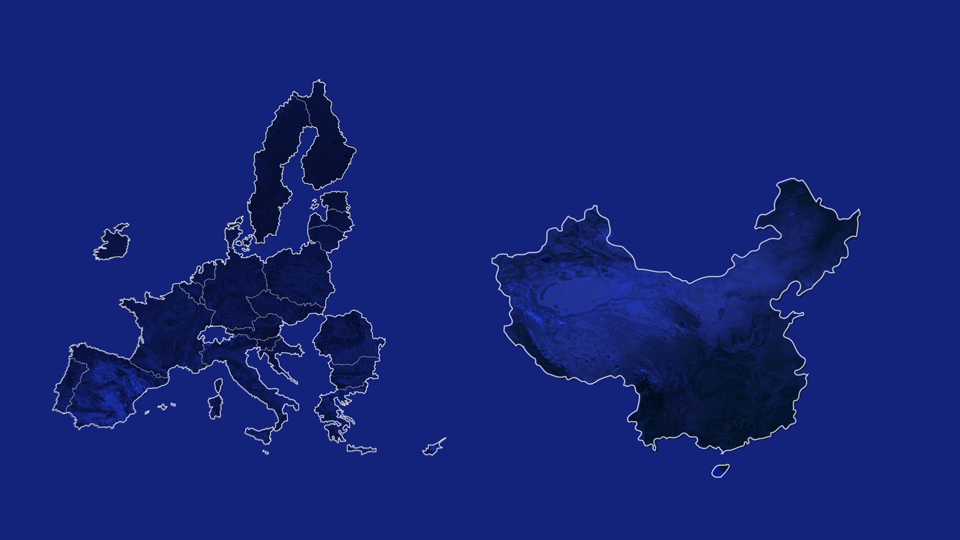
EUROPEAN UNION
Does an increase in migration mean an increase in challenges? Where cities promise work, jobseekers will follow, but with new cultural mixtures comes new potential for “the fear of the unknown”.
Read more
Of the 57 million people in the EU residing in a country different to that of their birth, roughly 20 million have come from another EU Member State and approximately 37 million from outside the EU. Of these, 1.8 million are recognised refugees. These migrant groups are unevenly distributed, and social integration levels vary. However, in contrast with general perceptions, mobility within the EU itself has increased at a much greater speed than that of non-EU migration to the EU. A large percentage of migrants move to cities, drawn in by their job opportunities and living standards. Today, nearly one in five migrants live in the world’s twenty largest cities*. What challenges are emerging from this increased movement of people? Publicly financed goods and services face additional demands and there is an increased need for specialiased approaches for vulnerable people, including a large number of unaccompanied minors. Public authorities are simultaneously required to set preparedness mechanisms against radicalisation or xenophobic protests. In terms of employment and social inclusion rates, non-EU citizens are facing tougher odds than host country citizens in most EU Member States.
Read less
CHINA
Are people at the centre of urbanisation plans in China? When the country’s cities are fortresses of general wellbeing and services, rural citizens struggling to obtain entry would disagree.
Read more
China’s Hukou system divides its population into two groups: urban citizens and rural citizens. But in 2013, rural migrant workers accounted for 44% of total employment in urban areas*. Urban citizens live in cities, and are granted access to essential services, including education, employment, health care, pensions, and subsidised housing. Rural citizens live in smaller towns or villages, and whilst they are entitled to arable land, they cannot use urban services. Many rural migrant workers are struggling to obtain urban residency, and this division has led to poor integration of rural migrants, social exclusion and conflicts. However, some provinces, such as Guangdong, have introduced measures that enable migrants to move into its cities. Tianjin, Shenzhen, Wuhan, Chengdu and Chongqing are also deploying incentives to attract young graduates and talent.
Read less
THE URBAN SPRAWL
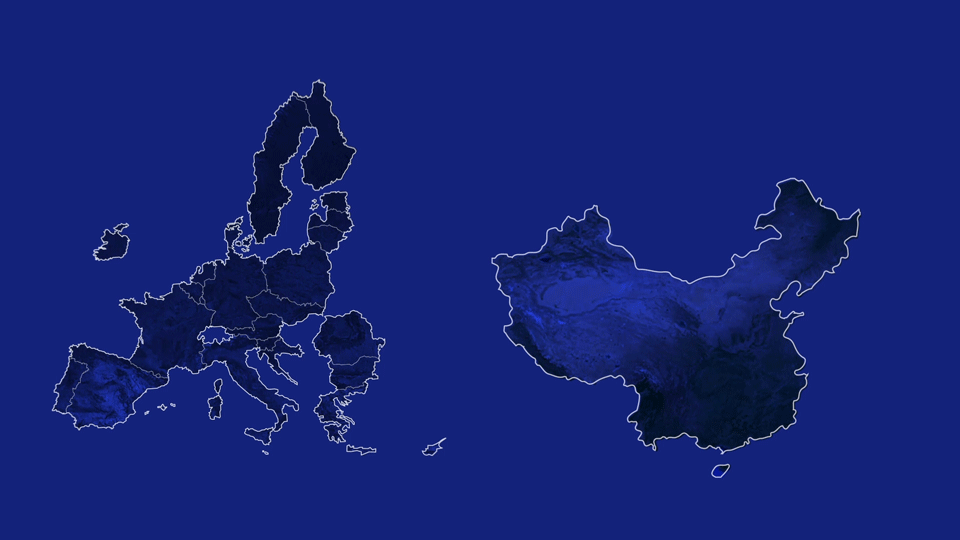
EUROPEAN UNION
What’s the answer to increased urban demand? As metropolitan populations grow, cities extend and sprawl to accommodate them. Land take in the EU28 amounted to 539km2 a year between 2012 and 2018, with urban sprawl one of its many drivers. But pressure for more sustainable living is increasing.
Read more
The median density of European cities sits at around 3,000 residents per square kilometre – almost twice that of their North American counterparts, but half that of Asian cities. The amount of urban space consumed per person has more than doubled over the past 50 years. This rapid increase has brought about some serious socio-economic and environmental consequences, including surface sealing, ecosystem fragmentation, land erosion, arable land loss, increased traffic and emissions. Urban sprawl is a major threat to sustainable development. With public transport services costly and harder to provide in suburban areas, dependence on and usage of private transport has increased as a result. Despite the EU’s efforts to tackle this issue, there is no common policy between nations. However, the EU is moving briskly forwards with urban renewal, which focuses on regenerating deprived urban areas, with a strong emphasis on citizen participation. Some governments, including the UK, Germany and France, have begun to reduce financial incentives that reward sprawl, and instead embarked upon redensification strategies to generate increased demand for local services and greater economic activity.
Read less
CHINA
What happens when cities are free to expand without restriction? When inner city areas are neglected at the expense of new developments, the consequences go further than bites being taken from arable land. Urban sprawl is just one of the factors that led to a 5.92 million hectare, or 3.31%, decrease in arable land in China between 2000 and 2010.
Read more
The cities of China have grown steadily over recent years. Driven by government incentives, local authorities have boosted their revenues by auctioning off state-owned land outside cities and retaining most of the income. The flip side of this is the loss of high-quality arable land; the supply of properties outweighing demand, leading to largely uninhabited ghost towns; and existing urban districts being neglected, resulting in a degree of social disintegration and economic distress. What is being done to slow this rapid urban expansion? Reforms to the public finance system should help reduce dependency on land auctioning as a revenue base for local authorities. Changes are being made to local governments, and new regulations that restrict multiple property ownership for individuals are being introduced. Recent urban renewal regulations and activities show rising awareness on the potential of existing urban areas in developing vibrant, mixed, and liveable urban communities.
Read less
EMISSIONS AND THE HOVERING CLOUD OF CLIMATE CHANGE
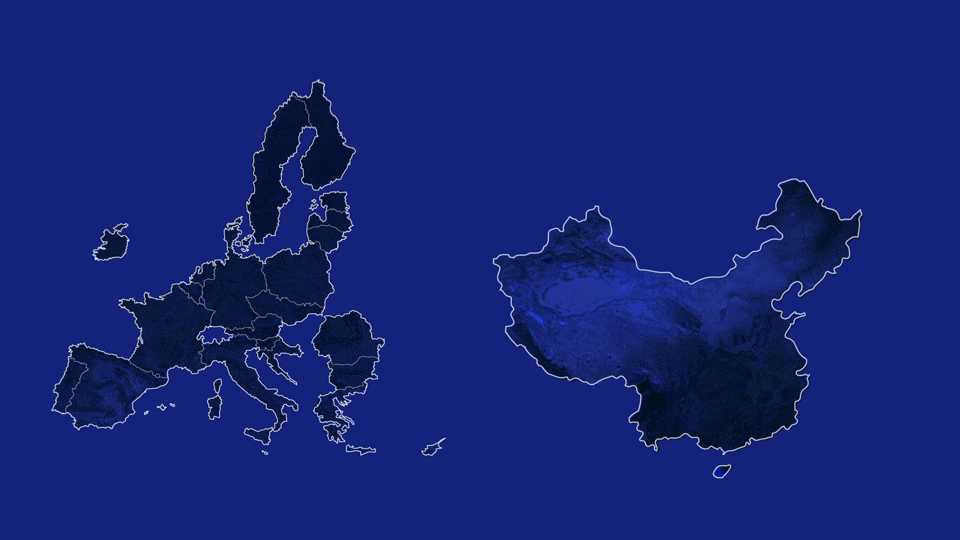
EUROPEAN UNION
Are EU cities well-placed to reduce their emissions? The challenge doesn’t present itself on equal footing from one city to the next, but there is one common denominator – they need to take action.
Read more
Cities might only occupy 2% of the planet’s landmass, but they account for over 70% of its CO2 emissions. With such a large disproportion, it has become apparent that the climate emergency needs to be tackled in cities – by, and for, their citizens. What does this mean for the EU? Buildings, transport, food and utilities are its main sources of greenhouse gas emissions, but the numbers vary greatly from one city to the next. Factors including population size, economic performance, urban infrastructures, legal frameworks, and vulnerability to the effects of climate change – flooding, heatwaves, forest fires and extreme weather events – all play a role. While cities are producing more emissions than any other area, they are also they best placed to tackle the challenge. Infrastructure density is higher in cities, so there is greater potential for cross-sectoral integration and complex infrastructures such as smart grids. They can also access capital and know-how and can create the economies of scale that are necessary for the piloting and upscaling of new ideas and concepts.
Read less
CHINA
Should Chinese urbanisation continue unchecked, given it is a major driver of economic growth? Chinese cities are generating more than just financial gains – they also produce 85% of the country’s CO2 emissions.
Read more
Growing urban populations bring growing demand for energy – research has shown that urbanisation has caused energy consumption and CO2 emissions to increase in every Chinese province. A study estimates that CO2 emissions from energy use in cities will grow by 1.8% per year between 2006 and 2030. But before devising a solution, it is important to fully understand the challenge. Some Chinese cities have conducted energy and greenhouse gas emission inventories, but the country lacks data that factors in detailed sectoral drivers, fuel mixes, and end-uses specific to urban areas. Affluent cities are shown to have systematically lower emissions per unit of GDP. Why? They are supported by imports from less well-off, industrial cities, which are in turn supported by local coal or oil extraction centres. Policies directly targeting manufacturing would drastically undermine the GDP of industrial cities, but consumption-based policies might allow emission reductions to be subsidised by those with greater ability to pay. One thing is clear - the cities of China will need to play an increasing role in helping the country to meet its energy and emissions reduction targets.
Read less
A CURRENCY IN NATURAL RESOURCES
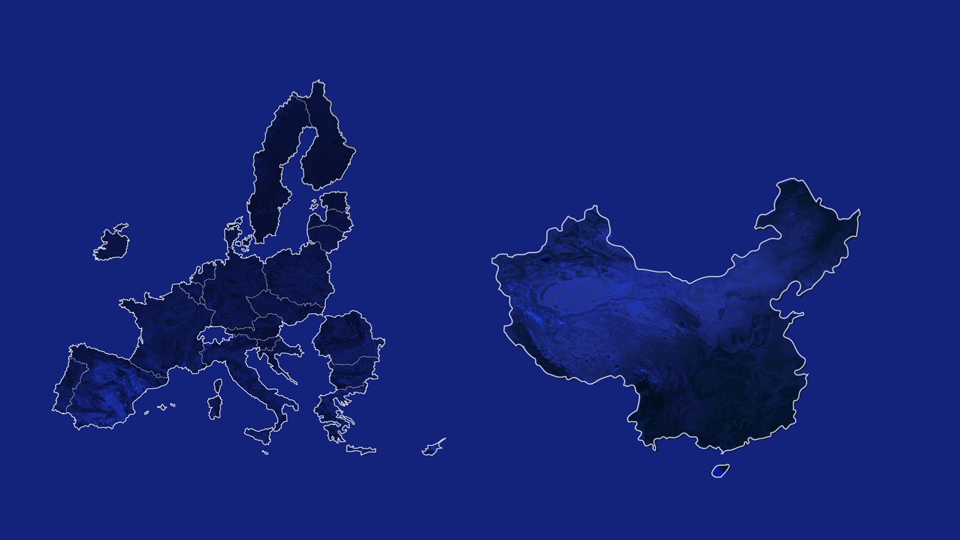
EUROPEAN UNION
How does the EU dispose of its millions of tonnes of waste? Ensuring a good quality of life for its growing populations is a complex matter when fuel for the economy is detriment to its natural resources.
Read more
The EU’s cities are the engines firing its economy. But they depend heavily on non-urban areas to meet their demand for resources – such as energy, water and food; and to dispose of their waste and emissions. The challenge is efficiently managing resources to improve quality of life for a growing economy whilst reducing correlated impacts on the environment. Because those impacts have become apparent. Just one example is that up to 15% of citizens living in EU cities are exposed to PM10 that exceed EU limit value regulations. There are disparities in resource management from place to place within the EU. 67% of waste is recycled or composted in Slovenia, in Malta, it’s 8%. Encouragingly, the EU average is 46% – demonstrating a distinct trend in a move away from landfilling*. The amount of municipal waste per capita per year also varies. In Romania, it’s 261kg opposed to 777kg in Denmark, and an EU average of 483kg. The quality of drinking water is generally very high in the EU – albeit water distribution is expensive. This is especially true in older cities, where water infrastructures are ageing and deteriorating, making leakage management a major challenge. In December 2015, the European Commission adopted a European Union Action Plan for a circular economy, followed by the adoption of a set of measures that support its implementation. This includes ways to integrate legislation on waste, consumer products, and chemicals.
Read less
CHINA
Are natural resources the currency that pays for urbanisation? The benefits of development have made themselves clear, but resulting issues surrounding air, water, and waste cannot be ignored.
Read more
Urbanisation is happening at increasing speed in China. One of the results? A significant improvement in urban infrastructure and public services. The coverage and share rate of urban public facilities have both increased greatly: municipal water coverage rose from 53.7% in 1981 to 98.1% in 2015, and the urban wastewater treatment rate jumped from 14.9% in 1991 to 91.9% in 2015 and green coverage rate of built district increased from 16.9% in 1986 to 40.1% in 2015. However, there is a flip side – urbanisation consumes high levels of energy and natural resources. Not only does this mean it is costly, it is also inefficient and has led to a serious deterioration in urban ecology. Air, water, and waste pollution have all become very serious issues in urban China. In February 2012, two-thirds of China’s cities failed to satisfy air quality standards*, and in 2015, more than half of its cities experienced acid rain. The groundwater quality monitoring results of 4110 stations in 182 cities across the country showed that the monitoring points of poor and extremely poor quality accounted for 40.4% and 16.8%, respectively. China’s cities disposed of 215 million of solid waste in 2017 –with an at an average annual growth rate of 4.8%.
Read less
